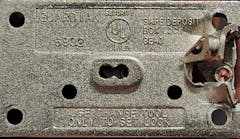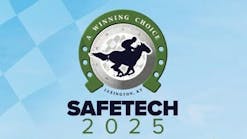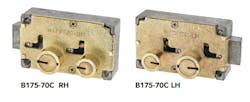March 10--A recent Wednesday, 10:02 a.m.: Mike Wyatt had waited more than five years for the chance to crack a real safe.
Wyatt, 51, is a man with time on his hands. He defines himself as a marginally employed computer repairman, a tinkerer in all things mechanical and an unrepentant coffee-shop slacker. He learned everything he knows about safecracking from a 34-page PDF document he found while doing a Google search on "safecracking for the computer scientist."
Over the years it has become his bible. In between repairing computers and bantering with "the old guys" at Martha and Bros. Coffee Co. near his apartment in Noe Valley, he read and reread the document so he could be ready should anyone ever need a safe cracked.
"Every once in a while I go to Craigslist and pick through the for-sale listing," Wyatt said. "I look for 'free safe.' "
Over time, he has responded to many ads from people who have found safes mysteriously sitting in their basements. Nobody ever got back to him -- until Christian Rodgers.
Rodgers recently bought a mid-century home in the Upper Castro neighborhood, which came complete with a 1-ton antique safe that prevented him from parking his car in the garage. He was offering 25 percent of the unknown contents to any person who could open the safe. The only catch was that the safecracker had to haul away the cracked safe when the job was done.
All Rodgers knew was that the safe had belonged to the well-known Italian family who had lived in the house since 1977. The 33-year-old marketing director for a solar company had no shortage of offers when he placed his Craigslist ad.
"It sort of ran the gamut," Rodgers said. "There were a lot of smart-sounding people ... and then there were definitely some that seemed like they had spent some time in San Quentin."
He added, "I think some of the crazier ones had that lottery-ticket mentality, like there is going to be a pile of gold or cash inside."
Wyatt, on the other hand, told Rodgers he was motivated by curiosity. Rodgers figured that was the right reason to want the job and called him back.
Rodgers actually had the combination to the Yale safe -- he just couldn't get it to work. "I tried it about 25 times, as well as my brother-in-law and a bunch of friends," he said. "Nobody could get it."
Wyatt was ecstatic. He had few expectations for jewels or other riches -- he just wanted to tinker with the inner workings of a safe. Rodgers said he could have two hours to try to make it happen.
"If I get into it, I got a hell of a story to tell my friends at the coffee shop the next day," Wyatt said two days before he went to work. "If not, I still have a pretty good story to tell my friends at the coffee shop the next day."
Despite the promise in Rodgers' ad, "there is no contract," Wyatt said. "If we open it up and it's full of gold doubloons and he wants all of 'em ... he just sends me home on my bicycle. If it's full of air, I get 25 percent of the air. Who knows?"
Wyatt showed up early for the job, at 9:45 a.m. He started getting a feeling for the dial with a brassy patina on it. The safe seemed much more substantial and well made than he had imagined, and he was beginning to have doubts about a successful crack.
Again and again, he tried the combination Rodgers had given him. A safe lock isn't some simple gym lock, and this one required a series of unconventional turns and twists that the average person would have a hard time figuring out.
Nothing was working. Rodgers watched and then paced outside a little.
At 10:22 a.m., Wyatt cried out, "I got it!" Rodgers came running over just as the several-hundred-pound door fell off the safe -- a contractor had removed the hinges in a previously failed attempt to get in.
Wyatt's reward was indeed 25 percent of the air in the safe. Apart from that, nothing was inside.
Still, Wyatt had a giant grin on his face as he held the inner workings of a lock like a shiny piece of gold. His curiosity had been quenched.
Wyatt later did some research and found that the safe dated to the 1910s. It was probably a fire safe intended to be used for important business documents, as opposed to gold doubloons.
"I'd feel a lot prouder about this if I had gotten into it without the combination, but it is still something sort of interesting that I'll talk about with my buddies," Wyatt said. "Kind of like a feather in my cap."
When the next safe comes along, he's ready to try again.
To see a multimedia production of this piece, go to www.blog.sfgate.com/cityexposed.
Copyright 2014 - San Francisco Chronicle





